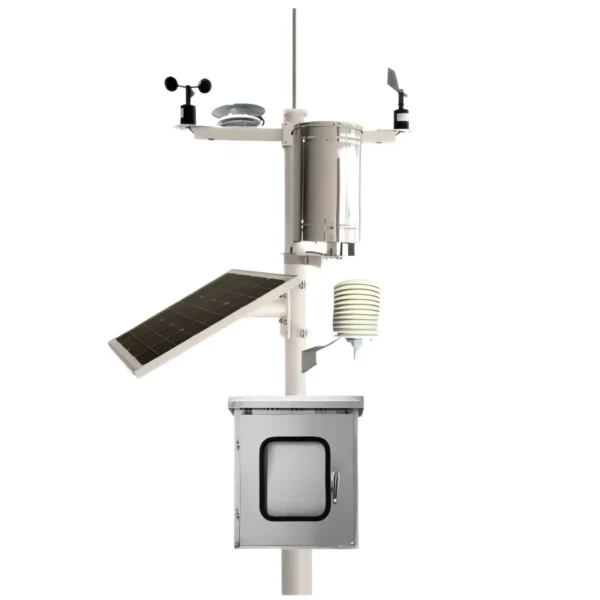
# Automatic Weather Station: Advancements and Applications in Modern Meteorology
Automatic Weather Stations (AWS) have revolutionized the way meteorological data is collected and analyzed. These advanced systems are designed to automatically record and transmit weather data, providing real-time information that is crucial for various applications in modern meteorology.
## What is an Automatic Weather Station?
An Automatic Weather Station is a sophisticated system equipped with sensors that measure various atmospheric parameters such as temperature, humidity, wind speed, wind direction, precipitation, and atmospheric pressure. The data collected by these sensors is processed and transmitted to a central database or directly to users, enabling continuous monitoring of weather conditions.
### Key Components of an AWS
– **Sensors**: These are the primary components that measure different weather parameters. Common sensors include thermometers, hygrometers, anemometers, and barometers.
– **Data Logger**: This device records the data collected by the sensors. It is often equipped with memory storage to retain data even during power outages.
– **Communication Module**: This module transmits the collected data to a central server or directly to users via various communication channels such as satellite, GSM, or radio.
– **Power Supply**: AWS systems are typically powered by solar panels, batteries, or a combination of both to ensure continuous operation.
## Advancements in Automatic Weather Stations
Recent advancements in technology have significantly enhanced the capabilities of Automatic Weather Stations. Some of the notable improvements include:
– **Increased Accuracy**: Modern sensors are more precise, providing highly accurate data that is essential for reliable weather forecasting.
– **Enhanced Durability**: AWS systems are now built to withstand harsh environmental conditions, ensuring long-term operation in remote and challenging locations.
– **Integration with IoT**: The integration of AWS with the Internet of Things (IoT) allows for seamless data sharing and remote monitoring, making it easier to manage and analyze weather data.
– **Data Analytics**: Advanced data analytics tools are now being used to process and interpret the vast amounts of data collected by AWS, leading to more accurate and timely weather predictions.
## Applications of Automatic Weather Stations
Automatic Weather Stations have a wide range of applications in various fields, including:
– **Agriculture**: Farmers use AWS data to make informed decisions about planting, irrigation, and harvesting, optimizing crop yields and reducing resource wastage.
– **Aviation**: Accurate weather data is crucial for flight safety and efficiency. AWS systems provide real-time information that helps pilots and air traffic controllers make better decisions.
– **Disaster Management**: AWS data is used to monitor and predict natural disasters such as hurricanes, floods, and wildfires, enabling timely evacuation and response efforts.
– **Climate Research**: Scientists use long-term data collected by AWS to study climate patterns and trends, contributing to our understanding of climate change and its impacts.
## Conclusion
Automatic Weather Stations have become indispensable tools in modern meteorology. Their ability to provide accurate, real-time weather data has transformed various industries and improved our ability to predict and respond to weather-related events. As technology continues to advance, we can expect even more sophisticated AWS systems that will further enhance our understanding of the atmosphere and its impact on our daily lives.
Keyword: automatic weather station

Leave A Comment